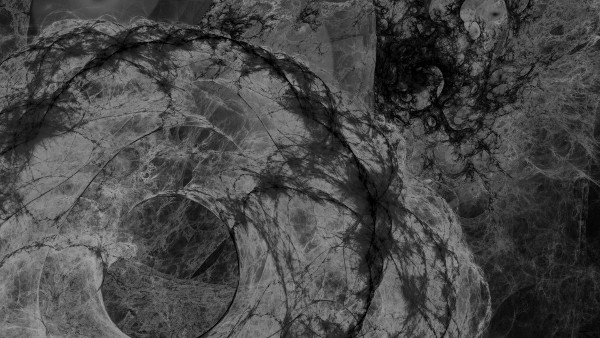What is Dark Matter?
Get answers to:
- Why do scientists believe the Universe has more matter than can be seen?
- What is a WIMP?
- Who first suggested the existence of dark matter?
Dark matter is the name given by scientists to the matter that is believed to exist in the Universe, but we cannot see. The current estimate is that 85% of all matter in the Universe is dark matter.
The prevalent idea is that dark matter is an exotic form of matter called a WIMP – Weakly Interacting Massive Particle. WIMPs are massive particles that either do not interact with the electromagnetic force or interact very weakly. You are familiar with the force of gravity – it tries to pull you to the center of the Earth. It is the electromagnetic force that keeps you being pulled through the ground. The electromagnetic force is what makes matter “solid”.
In the past, it was believed that dark matter was ordinary matter that was too dim to be seen.
Since the 19th century, scientists have observed that there seems to be much more gravity in the Universe than can be accounted for by visible matter.
In 1878, Simon Newcomb (1835-1909) wrote:1
The most extraordinary instances of the irregularities of which we speak are found in the stars of unusually rapid proper motion, which are moving forward at such a rate that the gravitation of all the known stars cannot stop them … Either the bodies which compose our universe are vastly more massive and numerous than telescopic examination seems to indicate, or 1830 Groombridge is a runaway star.
In 1884, Lord Kelvin (1824-1907) noted2 that 90% of the matter in the Universe seemed to be invisible:
It is nevertheless probable that there may be as many as 1000 million stars within the distance r, but many of them may be extinct and dark, and nine-tenths of them though not all dark may be not bright enough to be seen by us at their actual distances.
In 1906, Henri Poincaré disagreed with Kelvin’s estimate of the amount of unseen matter, and coined the term dark matter, when he wrote:3
There are the stars which we see because they shine; but might there not be obscure stars which circulate in the interstellar space and whose existence might long remain unknown? Very well then, that which Lord Kelvin’s method would give us would be the total number of stars including the dark ones; since his number is comparable to that which the telescope gives, then there is no dark matter, or at least not so much as there is of shining matter.
Despite Poincaré’s disagreement, astronomical observations continued to indicate that there must be more matter in the Universe than was being observed. Multiple sources of evidence appeared: galaxies and clusters that did not have enough visible matter to hold themselves together, galaxies which were rotating faster than their visible mass would allow them, gravitational lensing effects that either exceeded the observable mass of the objects or were shifted away from the observable center of mass .
Until the 1980s, the dominant view was that the “invisible” matter was normal matter that emitted little or no light. These objects were lumped together under the acronym MACHO (MAssive Compact Halo Object)4, however, further observation and theoretical work seem to indicate that MACHO objects cannot account for the unobserved mass – basically, the Universe is not old enough for these objects to account for the unobservable matter.
By the late 1980s, more and more scientists were accepting the idea that the dark matter was some sort of exotic matter.
Work at the Large Hadron Collider was expected to hint at some evidence of dark matter, but aside from the Higgs Boson, no new particles or phenomena have been observed that might point to the existence of dark matter as an exotic form of matter.
There is no consensus on what dark matter might be or even that it exists. However, there is consensus (and has been for almost 150 years) that the observed effects of gravity exceed what can be explained from the observable matter in the Universe.
Not all physicists believe the answer lies in dark matter, some believe that a modified theory of gravity may account for the observational discrepancies. The biggest challenge facing these theories is explaining the gravitational anomaly of the Bullet Cluster – a collision between two galaxies. In the Bullet Cluster the center of gravity is significantly shifted away from the observable matter – suggesting a region of concentrated dark matter located away from the visible matter.
As of today, the nature of dark matter is an unsolved problem in physics.
- Simon Newcomb, Poplar Astronomy, 1878, p.485 and p.488
- Lord Kelvin, Baltimore Lecture on Molecular Dynamics and the Wave Theory of Light, 1884, p.277, Lecture XVI, paragraph 20.
- The original article in French La Voie lactée et la théorie des gaz and its English translation The Milky Way and the Theory of Gases.
- MACHO objects include brown dwarfs, red dwarfs, white dwarfs, neutron stars, and black holes.
